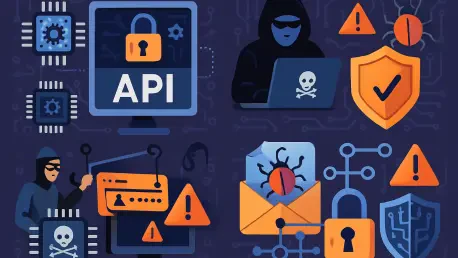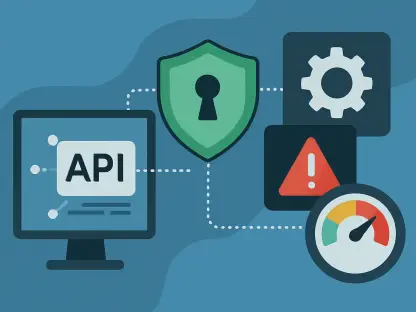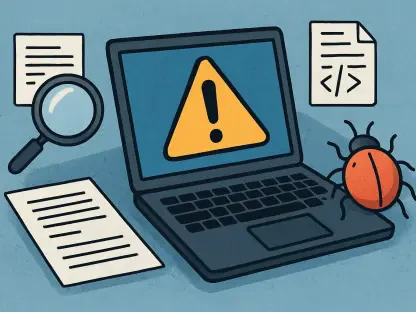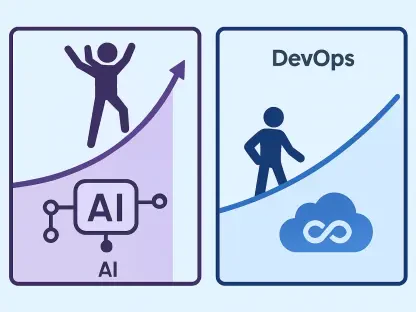In an era where digital infrastructure underpins nearly every aspect of business and personal life, the cybersecurity landscape has taken a troubling turn with a sharp rise in vulnerabilities targeting hardware and Application Programming Interfaces (APIs). Recent data reveals a staggering increase in threats to these critical components, which often serve as the backbone of modern systems yet remain underprotected compared to more traditional targets like websites. As attackers pivot to exploit less monitored areas, the numbers paint a grim picture: hardware vulnerabilities skyrocketed by 88% in 2024 compared to the previous year, while API flaws grew by a notable 10%. This shift signals a new frontier in cyber threats, where even minor weaknesses can lead to devastating breaches. With technology evolving at an unprecedented pace, understanding these emerging risks is no longer optional but essential for organizations aiming to safeguard their operations against increasingly sophisticated adversaries.
Rising Threats to Critical Infrastructure
The dramatic surge in hardware vulnerabilities in 2024 reflects a growing focus by attackers on physical and embedded systems that were once considered less accessible. These flaws, often uncovered by security researchers exploring new attack vectors, pose unique challenges due to the difficulty of patching or updating hardware compared to software. Unlike website vulnerabilities, which have remained relatively stable over recent years, hardware weaknesses have become a goldmine for cybercriminals seeking to exploit foundational infrastructure. The 88% increase underscores how interconnected devices, including those in the Internet of Things (IoT) ecosystem, expand the attack surface. Many of these systems lack robust security measures, leaving them exposed to threats that can compromise entire networks. As businesses integrate more smart devices into their operations, the potential for cascading failures grows, making it imperative to prioritize hardware security alongside more conventional defenses in an increasingly complex digital environment.
Equally concerning is the rise in API vulnerabilities, which climbed by 10% in 2024, driven by their central role in modern applications. APIs often handle sensitive business logic and data, meaning even small misconfigurations can have outsized consequences, granting attackers access to critical systems or information. While critical vulnerabilities in APIs have seen a 25% decline over the past three years, this improvement is overshadowed by the sheer volume of new flaws emerging as applications grow in complexity. Developers face mounting pressure to deliver features quickly, often at the expense of thorough security testing, leaving APIs as prime targets for exploitation. The trend highlights a broader shift in attacker tactics, moving away from well-fortified areas to components that are less scrutinized. As organizations rely more heavily on APIs to enable seamless integration across platforms, addressing these gaps becomes a non-negotiable step in preventing data breaches and maintaining trust in digital ecosystems.
Persistent Challenges with Access and Data Exposure
Among the most alarming trends in 2024 is the 40% spike in broken access control vulnerabilities, with a 36% increase specifically in critical, high-priority issues. These flaws are particularly dangerous because they are easy to exploit and often provide direct pathways to sensitive systems or data. Attackers capitalize on misconfigured permissions or inadequate authentication mechanisms, gaining unauthorized entry with relative ease. The complexity of modern applications, fueled by rapid development cycles and the adoption of AI-driven coding tools, frequently leaves such issues unresolved, as security often takes a backseat to functionality. This vulnerability category stands out as a persistent weak point, reflecting broader challenges in balancing innovation with robust protection. As systems become more interconnected, the risk of a single access control failure leading to widespread compromise grows, demanding a renewed focus on embedding security into the development process from the ground up.
Another pressing concern is the 42% rise in critical vulnerabilities tied to sensitive data exposure, often involving personal information like names, addresses, and account details. These breaches can remain undetected for extended periods, allowing attackers to monetize stolen data through sales on the dark web, phishing campaigns, or ransom demands. The increasing digitization of personal and business information amplifies the stakes, as even a single lapse can erode customer trust and trigger regulatory penalties. Unlike hardware or API flaws, data exposure issues often stem from systemic failures in encryption practices or storage protocols, compounded by the sheer volume of information flowing through modern systems. Addressing this challenge requires not only technical solutions but also a cultural shift toward prioritizing data protection at every level of an organization. With cybercriminals continuously refining their methods, staying ahead of these threats demands vigilance and a proactive approach to securing sensitive assets.
Economic Shifts and Collaborative Solutions
On the economic front, 2024 saw a 32% increase in average payouts for critical vulnerabilities, even as overall payout levels held steady. This shift indicates a strategic pivot by organizations to focus resources on the most severe risks, with Chief Information Security Officers (CISOs) allocating larger budgets to incentivize the discovery of high-impact flaws. By prioritizing critical issues over less severe ones, companies aim to mitigate the potential for catastrophic breaches that could disrupt operations or damage reputations. This trend reflects a broader recognition that not all vulnerabilities carry equal weight, and limited resources must be directed toward addressing the greatest threats. However, this approach also underscores the ongoing challenge of managing an expanding attack surface, where new vulnerabilities emerge faster than they can be fully addressed. Balancing financial incentives with comprehensive security programs remains a key concern for leaders navigating this dynamic landscape.
Beyond economics, the evolving threat environment of 2024 highlighted the limitations of isolated security efforts and the urgent need for collective resilience. Attackers continuously adapt to exploit technological innovations, targeting areas like hardware and APIs that have historically received less attention. Experts emphasize that collaboration and shared knowledge are vital to outpacing these sophisticated tactics, as no single organization can tackle the challenge alone. The progress made in securing traditional targets like websites, evidenced by a 30% decline in critical vulnerabilities over recent years, offers a blueprint for addressing emerging risks. Yet, the rapid pace of AI advancements and application complexity adds layers of difficulty to this endeavor. Building a unified defense strategy, where insights and best practices are exchanged across industries, emerged as a cornerstone for staying ahead of adversaries who thrive on exploiting gaps in fragmented security approaches.
Reflecting on Strategic Priorities
Looking back at the cybersecurity landscape of 2024, the sharp rise in hardware and API vulnerabilities served as a stark reminder of how quickly threats can evolve. The persistent challenges of broken access control and sensitive data exposure underscored systemic issues that demanded immediate attention, while economic adjustments reflected a pragmatic focus on high-impact risks. Moving forward, organizations were encouraged to integrate security into every stage of development, particularly for emerging technologies that expand the attack surface. Strengthening collaboration across sectors proved essential, as shared knowledge became a powerful tool against adaptive cybercriminals. Investing in proactive measures, such as regular audits and updated training for developers, offered a path to mitigate future risks. As the digital realm continued to grow, the lessons from 2024 emphasized that adaptability and unity were not just strategies but necessities for safeguarding critical systems against an ever-shifting array of threats.









